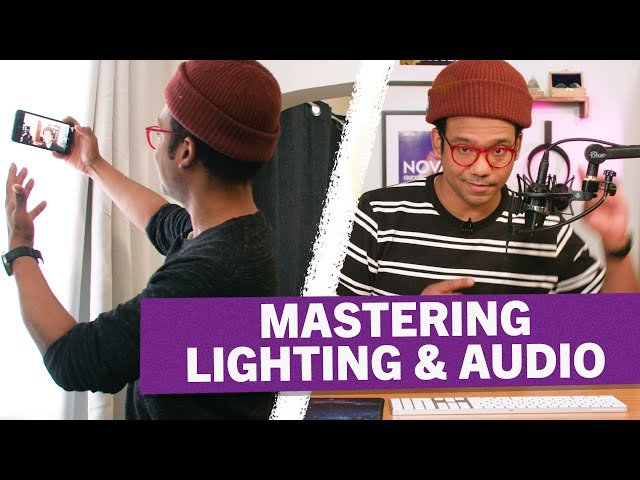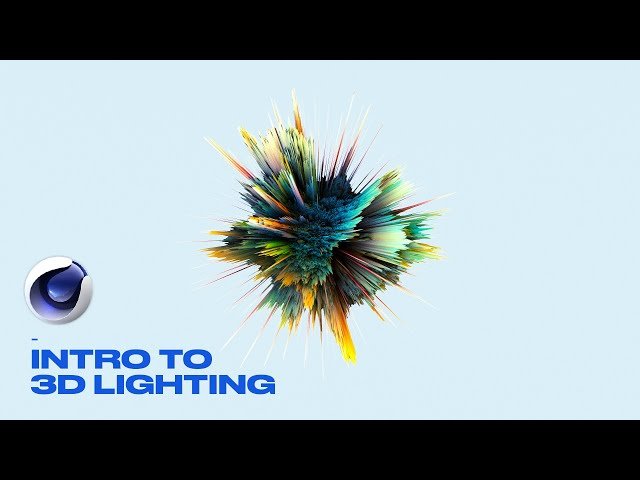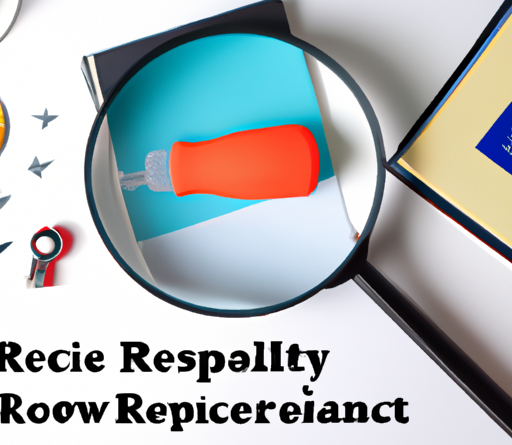
In the ever-evolving world of YouTube videos, content creators are continually pushing boundaries and experimenting with new techniques. One particularly intriguing trend is the rise of faceless YouTube videos, where creators choose to remain anonymous or hide their faces. But with this unique style comes a new challenge: how do you effectively master the art of lighting in faceless YouTube videos? Finding the perfect lighting setup becomes crucial in creating a captivating and professional-looking video, without revealing your identity. In this article, we will explore various lighting techniques and tips that will help you illuminate your faceless videos with style and flair. So, whether you’re a seasoned content creator looking to spice up your videos or a beginner embarking on the faceless YouTube journey, get ready to take your lighting skills to the next level.
Understanding the Importance of Lighting in Faceless YouTube Videos
When it comes to creating successful faceless YouTube videos, lighting plays a crucial role in both the visual presentation and the overall viewer engagement. Good lighting can elevate the quality of your content, making it look professional and visually appealing. It has the power to enhance the mood, highlight key features, and create a more immersive viewing experience. In this article, we will explore the key factors to consider in lighting setup for faceless YouTube videos, the different types of lighting equipment available, tips for enhancing facial features, common lighting mistakes to avoid, and budget-friendly lighting solutions. By understanding the importance of lighting and implementing the right techniques, you can take your faceless YouTube videos to the next level.
The Role of Lighting in Creating Professional-Looking Videos
When it comes to creating professional-looking videos, lighting is one of the most critical factors to consider. Proper lighting can completely transform the way your video appears on-screen. It helps to create a visually pleasing and well-balanced composition, enhances the subject’s appearance, and ensures that all the details are visible to the viewers. Without good lighting, your faceless YouTube videos may end up looking amateurish, uninteresting, and unprofessional. Investing time and effort into setting up the right lighting can significantly improve the production value and overall quality of your videos.

This image is property of i.ytimg.com.
The Impact of Lighting on Viewer Engagement and Perception
Apart from creating a professional appearance, lighting also has a significant impact on viewer engagement and perception. Well-lit videos are more likely to captivate and engage viewers, making them more likely to watch the entire video and take action afterward. Adequate lighting can help maintain focus and attention, ensure that all details are clearly visible, and create a positive viewing experience. On the other hand, poorly lit videos can be distracting, difficult to follow, and may result in viewers clicking away or losing interest. By understanding the importance of lighting in faceless YouTube videos, you can effectively engage your audience and leave a lasting impression.
Key Factors to Consider in Lighting Setup
To create an optimal lighting setup for your faceless YouTube videos, there are several key factors to consider. From choosing the right lighting equipment to understanding the different types of lighting and considering your video’s content and mood, each aspect plays a crucial role in achieving the desired visual outcome.
Choosing the Right Lighting Equipment
The first step in setting up your lighting is to select the right equipment. The choice between natural and artificial lighting depends on several factors such as availability, control, and desired outcome. Natural lighting can be a cost-effective option, especially if you have access to a room with ample windows and good natural light. Artificial lighting, on the other hand, provides more control over the intensity and direction of light. It is commonly used in indoor settings, where natural light may be limited or inconsistent. When choosing lighting equipment, consider factors such as brightness, color temperature, adjustability, and compatibility with your camera setup.
Understanding the Different Types of Lighting
To create the perfect lighting environment, it is essential to have a good understanding of the different types of lighting and their effects. Natural lighting refers to the light that comes from the sun, creating a soft and diffused illumination. It can be ideal for a more natural and authentic look. Artificial lighting includes various options such as ring lights, softbox lights, and LED lights. Ring lights provide a direct and even illumination, perfect for highlighting the subject’s facial features. Softbox lights create a diffused light source, minimizing harsh shadows and creating a more flattering effect. LED lights are versatile, energy-efficient, and provide adjustable lighting options, making them suitable for various video styles.
Considering the Video’s Content and Mood
When setting up your lighting, it is crucial to consider the content and mood of your video. Different video styles require different lighting setups to effectively convey the intended message. For example, interview-style videos may require a well-lit and evenly distributed lighting setup to ensure clarity and visibility of both the interviewer and interviewee. Tutorial or educational videos may benefit from a combination of key lights to highlight specific details and fill lights to soften shadows. Product review videos may require consistent lighting across different shots to maintain visual consistency. Vlogs or storytelling videos may utilize different lighting techniques to set the mood and create a specific atmosphere. By tailoring your lighting setup to match the content and mood of your videos, you can enhance the overall storytelling experience for your viewers.

This image is property of i.ytimg.com.
Types of Lighting Equipment
Now that we have covered the key factors to consider in your lighting setup, let’s delve into the different types of lighting equipment available. Understanding the characteristics and uses of each type will help you make an informed decision based on your specific needs and budget.
Natural lighting
Natural lighting, as mentioned earlier, refers to the light that comes from the sun. It provides a soft and diffused illumination and can be an excellent option if you have access to a well-lit room with ample windows. The advantage of natural lighting is that it is cost-effective and can create a natural and authentic look. However, it is subject to changes in weather, time of day, and the environment outside. Therefore, if you rely solely on natural lighting, it is essential to plan your video shoots accordingly, taking into account the time of day and weather conditions.
Artificial lighting
Artificial lighting encompasses a variety of lighting options that are specifically designed for indoor use. Unlike natural lighting, artificial lighting gives you more control over the intensity, direction, and color temperature. This type of lighting is particularly useful in situations where natural light is limited or inconsistent, or when shooting in a controlled studio environment. The advantage of artificial lighting is that it provides consistency and flexibility, allowing you to create the desired lighting setup regardless of the external conditions.
Ring lights
Ring lights have gained popularity in recent years, especially among content creators. They consist of a circular-shaped light that fits around the camera lens, providing a direct and even illumination onto the subject’s face. Ring lights are known for their ability to reduce harsh shadows, create circular catchlights in the eyes, and highlight facial features. They are widely used in beauty and fashion videos where showcasing facial details is essential. Ring lights are available in different sizes and intensities, allowing you to choose the one that best suits your needs.
Softbox lights
Softbox lights are another popular choice among YouTubers for their ability to create a soft and diffused light source. They consist of a fabric box with a diffuser material that spreads the light evenly, reducing harsh shadows and creating a more flattering effect. Softbox lights are ideal for creating a natural and professional look, as they mimic the softness of natural lighting. They come in various sizes and shapes, allowing you to customize your lighting setup based on your specific requirements.
LED lights
LED lights have become increasingly popular due to their versatility, energy efficiency, and adjustable lighting options. LED lights are available in different sizes, brightness levels, and color temperatures. They can be easily mounted on stands or attached to your camera setup, providing a portable and flexible lighting solution. LED lights are suitable for a wide range of video styles and can be used as key lights, fill lights, or background lights. The ability to control the color temperature of LED lights allows you to match the lighting setup to the desired mood or ambiance.
Creating the Perfect Lighting Environment
Now that we have explored the different types of lighting equipment, let’s dive into creating the perfect lighting environment for your faceless YouTube videos. A well-planned lighting setup can make a significant difference in the way your videos look. By incorporating the following techniques, you can achieve optimal illumination, avoid harsh shadows and unflattering angles, balance light intensities, and control color temperature.
Positioning the Lights for Optimal Illumination
The key to achieving optimal illumination is to position the lights strategically. Start by placing your key light, which is the primary light source, in front of and slightly off to the side of your face. This will create a visually pleasing illumination and highlight your facial features. Next, add fill lights to soften the shadows created by the key light. Fill lights should be placed on the opposite side of the key light to minimize shadows while maintaining a natural and balanced look. Finally, consider adding background lights to provide depth and separation between you and the background. Experiment with different light positions until you achieve the desired effect.
Avoiding Harsh Shadows and Unflattering Angles
Harsh shadows and unflattering angles can significantly impact the overall quality of your videos. To avoid harsh shadows, make sure that your key light is diffused or adjusted to create a soft and even illumination. Softbox lights and ring lights are particularly effective in minimizing harsh shadows and creating a flattering effect on your face. It is also important to position the lights at flattering angles that highlight your best features. Experiment with different positions and angles to find the most flattering setup for your face.
Balancing Light Intensities
Balancing light intensities is crucial to ensure that all areas and details are properly illuminated. The key light should provide the primary illumination, while the fill lights should be adjusted to soften shadows without overpowering the key light. Background lights should provide enough brightness to create separation but should not overpower the main subject. Take into account the overall mood and atmosphere you want to convey in your videos. Adjust the intensity of the lights accordingly to create the desired effect.
Controlling the Color Temperature
Controlling the color temperature of your lighting setup is essential to maintain consistency and achieve the desired mood. Color temperature is measured in Kelvin (K) and determines whether the light appears warm (yellowish) or cool (bluish). Most cameras have a white balance feature that allows you to adjust the color temperature. When setting the color temperature, consider the environment and the effect you want to create. For example, warmer color temperatures can create a cozy and intimate atmosphere, while cooler color temperatures can evoke a more modern and professional look.
Tips for Enhancing Facial Features
In faceless YouTube videos, the focus is often on the subject’s facial features. Proper lighting techniques can help enhance these features and create a more visually appealing presentation. Here are some tips for using lighting to highlight facial contours, soften shadows, and achieve a balanced and natural look.
Using Key Lights to Highlight Facial Contours
Key lights are the primary light source and should be positioned to highlight your facial contours. By placing the key light slightly off to the side of your face, you can create depth and dimension, enhancing your facial structure. Experiment with different angles and distances to find the most flattering position for your face shape. Avoid positioning the key light directly in front of you, as this can create a flat and uninteresting look.
Using Fill Lights to Soften Shadows and Minimize Imperfections
Fill lights are used to soften the shadows created by the key light and provide a more balanced illumination. They should be placed on the opposite side of the key light, ensuring that the shadows are minimized without completely eliminating them. Fill lights help to create a more even and flattering look, particularly by minimizing under-eye shadows and imperfections. Adjust the intensity of the fill lights to achieve the desired effect while maintaining a natural appearance.
Avoiding Overexposure or Underexposure
Proper exposure is crucial in any video, including faceless YouTube videos. Overexposure occurs when the lighting is too bright, resulting in washed-out and unnatural-looking footage. Underexposure, on the other hand, occurs when the lighting is too dim, making it difficult to distinguish details. To avoid overexposure or underexposure, monitor the exposure levels on your camera’s histogram or the exposure meter. Adjust the lighting intensity accordingly until you achieve a well-balanced exposure. The goal is to achieve a natural and visually pleasing appearance without compromising the visibility of important details.
Lighting Techniques for Different Video Styles
Different video styles require specific lighting techniques to effectively convey the intended message and create a cohesive visual presentation. Here, we will explore the recommended lighting techniques for interview-style videos, tutorial or educational videos, product review videos, and vlogs or storytelling videos.
Interview-Style Videos
In interview-style videos, the focus is on the conversation and the interaction between the interviewer and interviewee. The lighting setup should ensure that both individuals are properly illuminated and clearly visible to the viewers. Start by positioning the key light slightly off to the side of the interviewee, creating a flattering illumination on their face. Place a fill light on the opposite side of the key light to soften shadows and maintain a balanced look. If there is an interviewer involved, repeat the same lighting setup for them as well. Ensure that the lighting is consistent throughout the video to maintain a professional and polished appearance.
Tutorial or Educational Videos
Tutorial or educational videos often require a more detailed and focused lighting setup to highlight specific details. Start by positioning the key light to illuminate the subject’s face, ensuring that all key features are clearly visible. Depending on the nature of the tutorial, additional fill lights may be added to soften shadows and provide more even illumination. It is important to adjust the lighting setup based on the movements and actions performed in the tutorial, ensuring that all crucial steps are well-illuminated and easy to follow. Experiment with different lighting positions and intensities to achieve the desired visual clarity.
Product Review Videos
Product review videos require a lighting setup that effectively showcases the product while maintaining a consistent and visually pleasing result. Start by positioning the key light slightly off to the side of the subject, creating dimension and highlighting facial features. If you are showcasing physical products, consider adding additional fill lights or reflectors to eliminate harsh shadows and ensure that all product details are visible. It is important to maintain consistency in the lighting setup across different product shots to create a professional and cohesive presentation. Experiment with different lighting positions and intensities to find the most appropriate setup for your specific product review videos.
Vlogs or Storytelling Videos
Vlogs or storytelling videos often require more creative and dynamic lighting setups to visually enhance the narrative and set the mood. Depending on the specific story or atmosphere you want to convey, you can experiment with different lighting techniques and effects. For example, to create a cozy and intimate atmosphere, you may use warm and soft lighting. To create a mysterious or dramatic effect, you may utilize more directional and contrasted lighting. It is important to plan your lighting setup in advance and consider how each shot contributes to the overall storytelling experience. By utilizing different lighting techniques, you can effectively enhance the visual impact of your vlogs or storytelling videos.
Common Lighting Mistakes to Avoid
While understanding the importance of lighting is crucial, it is equally important to avoid common lighting mistakes that can negatively impact your faceless YouTube videos. By being aware of these mistakes, you can ensure that your videos are visually pleasing, well-illuminated, and engaging.
Insufficient Lighting
One of the most common mistakes is insufficient lighting. Inadequate lighting can result in dark and muddy footage, making it difficult for viewers to see the details. Ensure that you have enough light sources and that they are properly positioned to provide sufficient illumination. Consider using additional lights or increasing the intensity of your existing lights if necessary. Proper lighting not only enhances the visual quality but also keeps viewers engaged and focused throughout your videos.
Inconsistent Lighting
Inconsistent lighting is another mistake to avoid. When shooting multiple scenes or shots, it is important to maintain consistency in your lighting setup. Sudden changes in lighting can be distracting and disrupt the flow of your videos. Take note of your lighting positions, intensities, and color temperatures for each scene and make sure they match seamlessly. Consider creating a lighting diagram or keeping notes to ensure that you can recreate the desired lighting setup if you need to reshoot or continue the video at a later time.
Using Colored or Overly Dramatic Lighting
While experimenting with different lighting techniques is encouraged, it is important to avoid using colored or overly dramatic lighting unless it complements the content and mood of your videos. Colored lighting can create an unnatural and distracting effect, making it difficult for viewers to focus on the subject or message. If you choose to incorporate colored lighting, ensure that it is relevant and enhances the visual presentation. Similarly, overly dramatic lighting can overshadow the content and become a distraction. Strive for a balance between visual impact and subtlety to maintain viewer engagement.
Ignoring the Background Lighting
When setting up your lighting, it is easy to focus solely on illuminating the subject while neglecting the background lighting. The background plays an important role in the visual composition of your videos, and proper background lighting can greatly enhance the overall presentation. Consider adding background lights or adjusting existing lights to create separation between the subject and the background. This will add depth and visual interest to your videos, preventing the subject from blending into the background. Take the time to evaluate the background lighting to ensure that it complements and enhances the subject.
Setting Up a Budget-Friendly Lighting Solution
Setting up a budget-friendly lighting solution doesn’t mean compromising on quality. With careful planning and consideration, you can achieve effective lighting without breaking the bank. Here are some DIY lighting options and affordable lighting equipment recommendations to help you achieve professional-looking faceless YouTube videos within your budget.
DIY Lighting Options
If you are on a tight budget, there are a few DIY lighting options that you can consider. One popular option is the use of natural lighting. Position yourself near a window or in a well-lit room to take advantage of the natural light source. However, keep in mind that natural lighting can be inconsistent depending on the time of day and weather conditions. Another DIY option is to use household lamps with LED or daylight bulbs. While not specifically designed for videography, these lamps can provide a decent amount of light and can be positioned and adjusted to suit your needs. DIY diffusion panels can also be created using white bed sheets or shower curtains to create soft and diffused lighting.
Affordable Lighting Equipment Recommendations
If you have a modest budget and are looking for affordable lighting equipment, there are several options to consider. LED ring lights are available at various price points and are known for their versatility and portability. They provide direct and even illumination, making them ideal for highlighting facial features. Softbox lighting kits are another cost-effective option, offering diffused and flattering lighting. These kits typically include multiple lights, stands, and diffusers, providing a versatile and complete lighting setup. Additionally, affordable LED panel lights are available, which provide adjustable intensity and color temperature options. These lights can be mounted on stands or attached to your camera setup, offering flexibility and control at a reasonable price.

This image is property of i.ytimg.com.
Importance of Continuity in Lighting for Faceless YouTube Channels
Creating a consistent lighting style is crucial for faceless YouTube channels. Continuity in lighting not only enhances the overall visual presentation but also helps to establish a recognizable visual identity for your channel. Consistency makes it easier for viewers to identify and connect with your content, building trust and loyalty over time.
Establishing a Consistent Lighting Style
By establishing a consistent lighting style, you can create a visual signature that sets your videos apart and contributes to the overall aesthetic. This can be achieved by using similar lighting equipment, positioning the lights in a consistent manner, and maintaining consistency in color temperature and intensity across different videos. Continuity in lighting creates a cohesive and polished look, reinforcing your channel’s professionalism and attention to detail.
Creating a Recognizable Visual Identity
A recognizable visual identity is crucial for branding and building a loyal audience. When viewers can instantly recognize your videos based on their visual style, it helps to establish a strong connection between your content and your audience. By consistently using a specific lighting style, you can create a distinct and memorable look that sets your videos apart from others. This visual identity becomes an integral part of your brand and helps viewers associate your content with a specific experience or feeling.
Experimentation and Adjustment in Lighting Setup
While having a solid understanding of lighting techniques is important, it’s equally crucial to embrace experimentation and make adjustments based on feedback and self-evaluation. Each video and setting is unique, and what works for one video may not necessarily work for another. By experimenting with different lighting configurations and seeking feedback from your audience, you can continually improve and refine your lighting setup.
Testing Different Lighting Configurations
Don’t be afraid to try out different lighting configurations and techniques. Test various positions, intensities, and angles to see how they affect the overall look and feel of your videos. Take the time to review the footage and evaluate how the lighting enhances or detracts from the content. This experimentation phase allows you to discover new and creative ways to use lighting to your advantage.
Making Adjustments Based on Feedback and Self-Evaluation
Feedback from your audience is invaluable when it comes to improving your lighting setup. Pay attention to the comments and suggestions you receive and make adjustments accordingly. Additionally, take the time to critically evaluate your own videos and assess what is working well and what can be improved. This self-evaluation process allows you to continually refine your lighting techniques and achieve the desired visual outcome.
In conclusion, understanding the importance of lighting in faceless YouTube videos is essential for creating professional-looking content and engaging your viewers. By considering factors such as the right lighting equipment, different types of lighting, and the content and mood of your videos, you can create the perfect lighting environment. Additionally, by following tips for enhancing facial features and utilizing appropriate lighting techniques for different video styles, you can elevate the quality and impact of your videos. Avoiding common lighting mistakes, setting up budget-friendly solutions, and maintaining continuity in lighting helps to establish a strong visual identity for your faceless YouTube channel. Remember to embrace experimentation and make adjustments based on feedback and self-evaluation to continually improve and refine your lighting setup. With proper lighting, you can take your faceless YouTube videos to new heights and captivate your audience like never before.

This image is property of i.ytimg.com.




